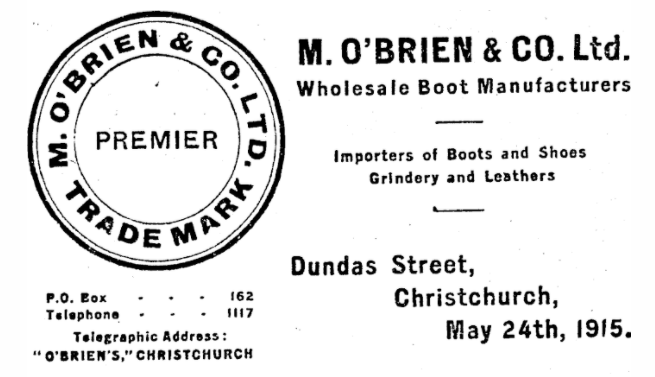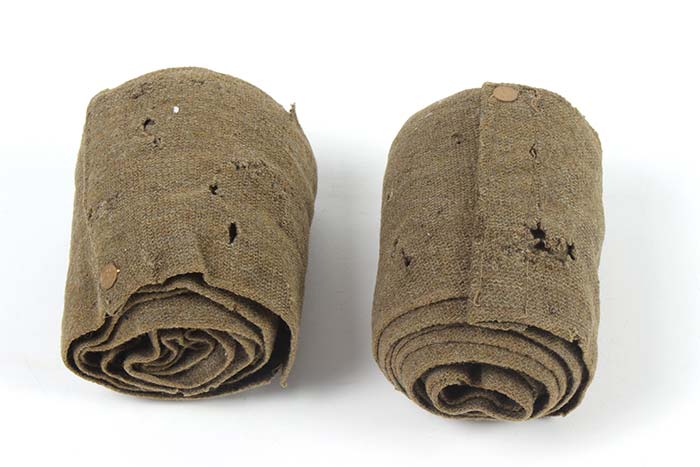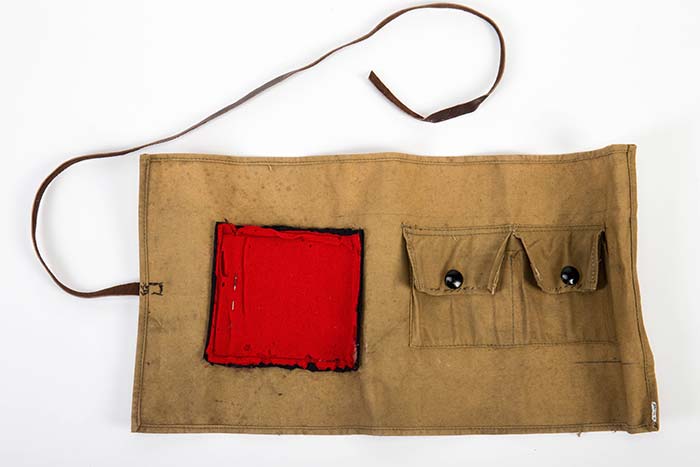Kitbag contents
A list published by the Defence Department in 1915 shows what kit was issued in WWI to enlisted men like teacher Cecil Malthus, on their way into a Theatre of War.
Uniform clothing: 2 jackets, 1 pair of trousers or pantaloons, 1 hat (felt), 1 cap (forage), 1 pair puttees, 1 greatcoat, 2 pair boots, 1 denim shirt and 1 pair shoes (canvas).
Personal clothing: Kitbag, 2 shirts (working), 2 shirts (under), 2 pair pants (under), 1 pair braces, 3 pair socks, 1 pair towels, 1 jersey (khaki), 1 cholera belt, 1 hold-all containing knife, fork and spoon, 1 “housewife”(filled), 1 plate, 1 pannikin, and 1 seakit bag.
(Local and General, Wairarapa Daily Times, 9 March 1915, page 4)
You can see examples of the kind of gear, both issued, and personal, that soldiers carried with them, including a kit bag, in the O'Sullivan Collection.
![Kit bag, William Frank Basher. [circa 1910-1920] Barry O'Sullivan collection. CCL-OSullivan-2756-Kit-bag-001](https://heritage.christchurchcitylibraries.com/Archives/OSullivan/PersonalEffects/Pages/2756-001.jpg)
![Hat, Felt, Peaked Crown, Type 2 variation [circa 1910-1920]. Barry O'Sullivan collection.](https://heritage.christchurchcitylibraries.com/Archives/OSullivan/PersonalEffects/Pages/3033-002.jpg)
Local suppliers
Two Ōtautahi Christchurch firms won tenders to supply some of these items. Strange & Co.(Ltd) made mounted and dis-mounted great coats, frocks, trousers and breeches, and M. O’Brien & Co won the contract to make military boots.

Puttees and housewives?
Some distinctive items of clothing worn by soldiers were the puttees. These were very important in the water-logged trenches of the Western Front where they were used to help keep feet dry. Made from wool and nine-foot long, soldiers wrapped this material from the ankle up their legs and secured it with a cotton tie. As well as helping to keep the feet dry puttees also protected the wearer from shrapnel and barbed-wire.
The hussif, or ‘housewife’ was a waterproof sewing kit usually made of oilcloth or leather. There seems to be variation in what it contained but basically it had some big needles, preferably short with large threading eyes, some strong thread already cut, buttons, small amount of wool, one and half inch nail, pins. Some also had a tailors thimble, sharp nail scissors, and cobblers wax. These items were sewn into the lined leather so they wouldn't fall out and be lost. It should all roll up nice and small.
Sources:
- New Zealand Army Uniform and Clothing 1910-1945, Barry O’Sullivan
- What to give a soldier, Horowhenua Chronicle, 4 May, 1915, page 2
- Comforts for soldiers, Auckland Star, 12 January, 1916, page 2
- Kit, sewing, Auckland War Memorial Museum, 1997. 15.5
- Meet the objects, Auckland War Memorial Museum,Tāmaki Paenga Hira. U294, 1990.120
- Miscellaneous, M. O’Brien & Co, Press, 26th May, 1915, page 9
- First World War military formations , (Ministry for Culture and Heritage), updated 2-May-2017 (accessed 21/04/2021)
Further reading and events
- Johnny Enzed: The New Zealand Soldier in the First World War, 1914-1918 by Glyn Harper
- More posts about the First World War
- Heritage Highlights: New Zealand's voices of war: the Mobile Unit recordings 1940-1945 Tuesday 27 April 2021, 2.15-4pm, Tūranga
Annie
Local History Librarian, Tuakiri | Identity, Tūranga







Add a comment to: Pack up your troubles in your old kit bag: WWI soldiers’ gear